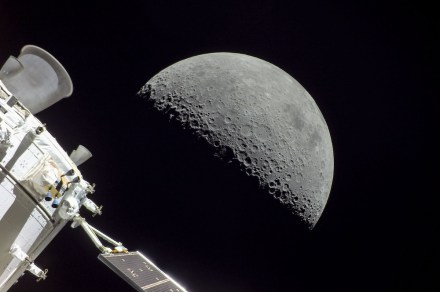NASA releases stunning hi-res moon images from Orion flyby
By all accounts, NASA’s Artemis I mission has been going extraordinarily well, setting up the space agency for a crewed landing on the lunar surface possibly as soon as 2025.
The mission started on November 16 with the maiden flight of NASA’s Space Launch System (SLS) rocket, the most powerful space vehicle ever to have flown.
The SLS propelled the uncrewed Orion toward the moon where it performed flybys of Earth’s nearest neighbor at the start and end of the spacecraft’s time in lunar orbit.
The second of these flybys took place earlier this week, and NASA has just released some astonishingly detailed images captured by the Orion’s Optical Navigation Camera as it passed within 79 miles of the lunar surface.
Jim Free, NASA’s associate administrator for exploration systems development, has also been mightily impressed by the quality of the imagery, sharing some of his favorite captures with his Twitter followers.
The Orion spacecraft is now on its way home and is set to splash down off the coast of California, near San Diego, on Sunday, December 11. Here’s how to watch the homecoming.
NASA will then perform thorough checks on the capsule to see how it fared during its voyage, and also examine the reams of data gathered by the Orion during the multi-week mission, before setting a firm date for Artemis II, which will use the same rocket and spacecraft to send a human crew on an identical path as Artemis I.
Ultimately, NASA wants to build a base on the moon for astronauts to live and work. Such a facility could also act as an operations center for the first crewed mission to Mars, which could launch from the lunar surface if scientists are able to effectively mine the moon’s water ice for converting into rocket fuel.
NASA’s first crewed moon landing in 1969 marked a new but short-lived era of human space travel, but today the agency believes that newer technology and commercial partnerships will enable it take human space exploration to the next level.
Editors’ Recommendations

By all accounts, NASA’s Artemis I mission has been going extraordinarily well, setting up the space agency for a crewed landing on the lunar surface possibly as soon as 2025.
The mission started on November 16 with the maiden flight of NASA’s Space Launch System (SLS) rocket, the most powerful space vehicle ever to have flown.
The SLS propelled the uncrewed Orion toward the moon where it performed flybys of Earth’s nearest neighbor at the start and end of the spacecraft’s time in lunar orbit.
The second of these flybys took place earlier this week, and NASA has just released some astonishingly detailed images captured by the Orion’s Optical Navigation Camera as it passed within 79 miles of the lunar surface.
Jim Free, NASA’s associate administrator for exploration systems development, has also been mightily impressed by the quality of the imagery, sharing some of his favorite captures with his Twitter followers.
The Orion spacecraft is now on its way home and is set to splash down off the coast of California, near San Diego, on Sunday, December 11. Here’s how to watch the homecoming.
NASA will then perform thorough checks on the capsule to see how it fared during its voyage, and also examine the reams of data gathered by the Orion during the multi-week mission, before setting a firm date for Artemis II, which will use the same rocket and spacecraft to send a human crew on an identical path as Artemis I.
Ultimately, NASA wants to build a base on the moon for astronauts to live and work. Such a facility could also act as an operations center for the first crewed mission to Mars, which could launch from the lunar surface if scientists are able to effectively mine the moon’s water ice for converting into rocket fuel.
NASA’s first crewed moon landing in 1969 marked a new but short-lived era of human space travel, but today the agency believes that newer technology and commercial partnerships will enable it take human space exploration to the next level.
Editors’ Recommendations
